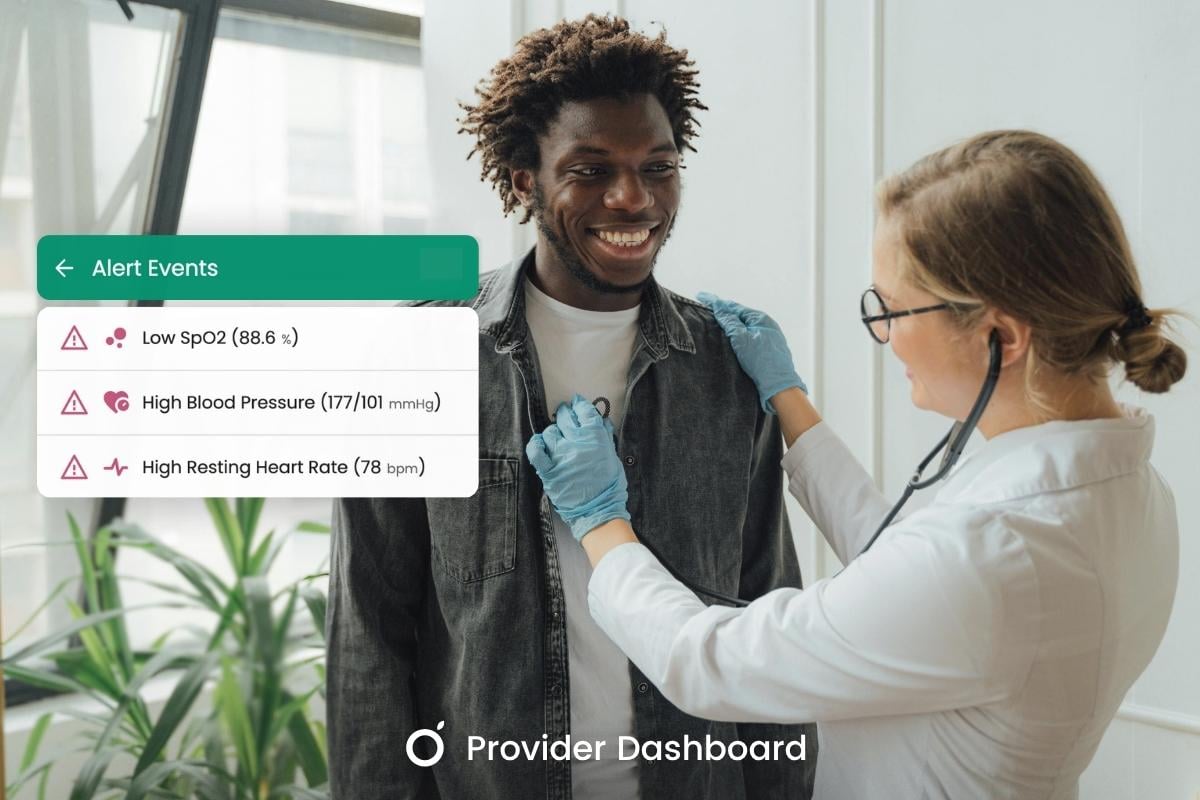
Track patient progress over time with AI-powered insights
Guava’s Provider Dashboard helps doctors monitor patient progress over time with clarity and precision. It brings together labs, vitals, and lifestyle data from across sources, using AI to filter noise and surface the relevant data necessary for proactive care.
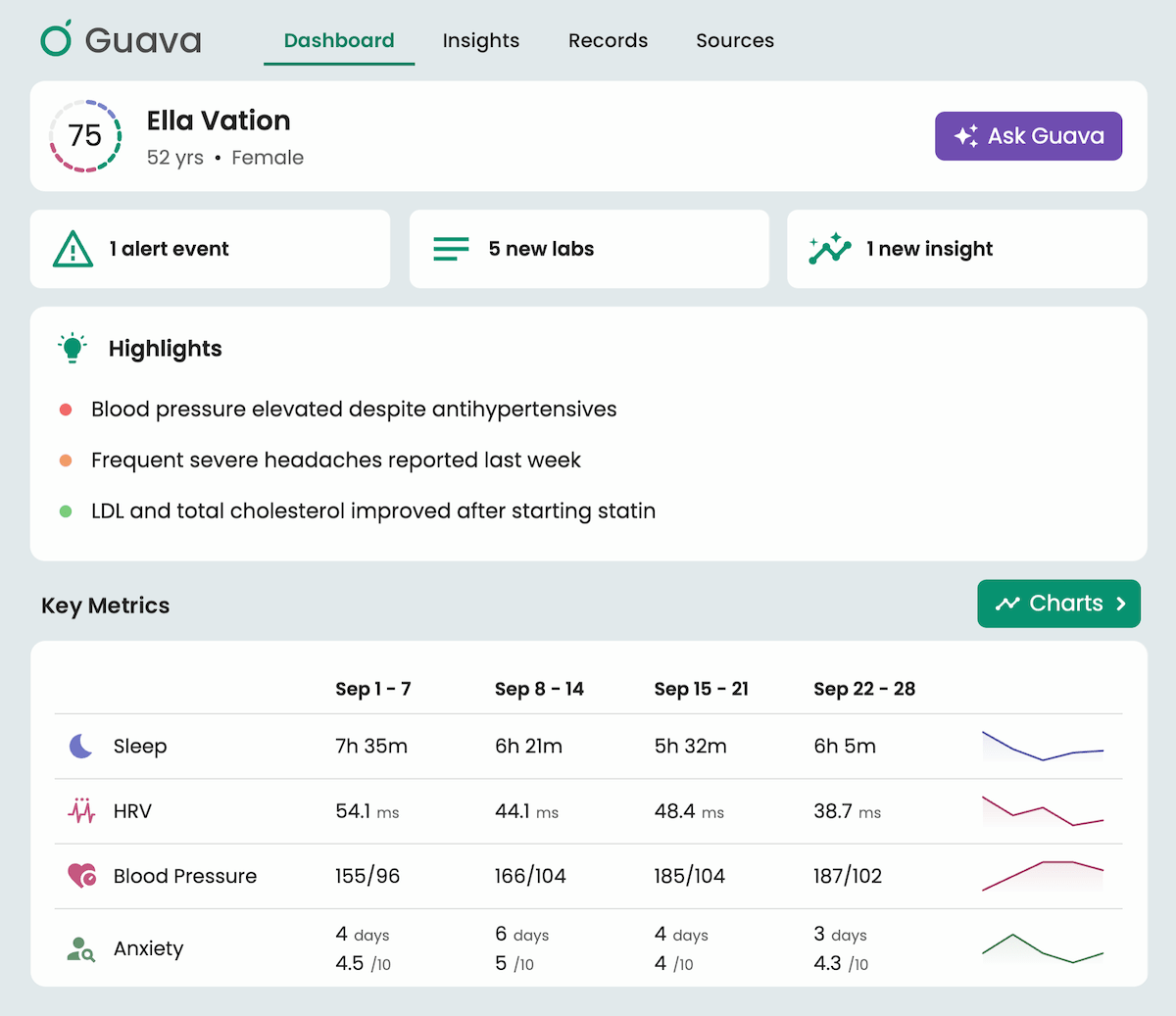
What is Guava’s Provider Dashboard?
This AI-powered clinical platform was built to improve the workflow of concierge and direct primary care practices. It delivers a complete, longitudinal picture of each patient by combining:
- EHR integrations for complete medical records and labs
- Wearable and device syncing from Garmin, Oura, Fitbit, Dexcom, and more
- Daily symptom logs and lifestyle data from the Guava app
- AI-driven summaries, insights, and alerts that highlight meaningful changes
- HIPAA-compliant infrastructure that keeps every data source secure
The result is a single, longitudinal view of patient health combined with an AI assistant that’s actually usable for proactive, personalized care.
AI tools for doctors in Guava
AI-powered patient monitoring in Guava is specifically designed for clinical use, offering tools that integrate into your workflow quickly and easily. It’s built to complement your expertise, not replace it, by providing actionable insights and support decision-making. Guava helps streamline patient care without compromising the human element that’s so vital in clinical practice.
Auto-generated highlights

At the top of the dashboard, auto-generated AI health updates are surfaced for each patient. Highlights are generated by scanning information across patients’ entire Guava profile to surface trends and changes that physicians would be likely to follow up with. Highlights flag data like:
- Recent out-of-range labs
- New symptoms or changes in frequency or severity
- Recent procedures or visit notes from other clinics
- Changes in vitals and wearable data
- New medications and supplements
Customizable health alerts
Providers can set alerts based on thresholds tailored to their practice or individual patients. Alerts can be set for metrics like blood pressure, glucose levels, resting heart rate, blood oxygen, and more. By enabling Smart Alerts, notifications will automatically adjust to your patient’s data. When metrics deviate from the norm, Guava notifies you automatically, saving time on manual reviews.
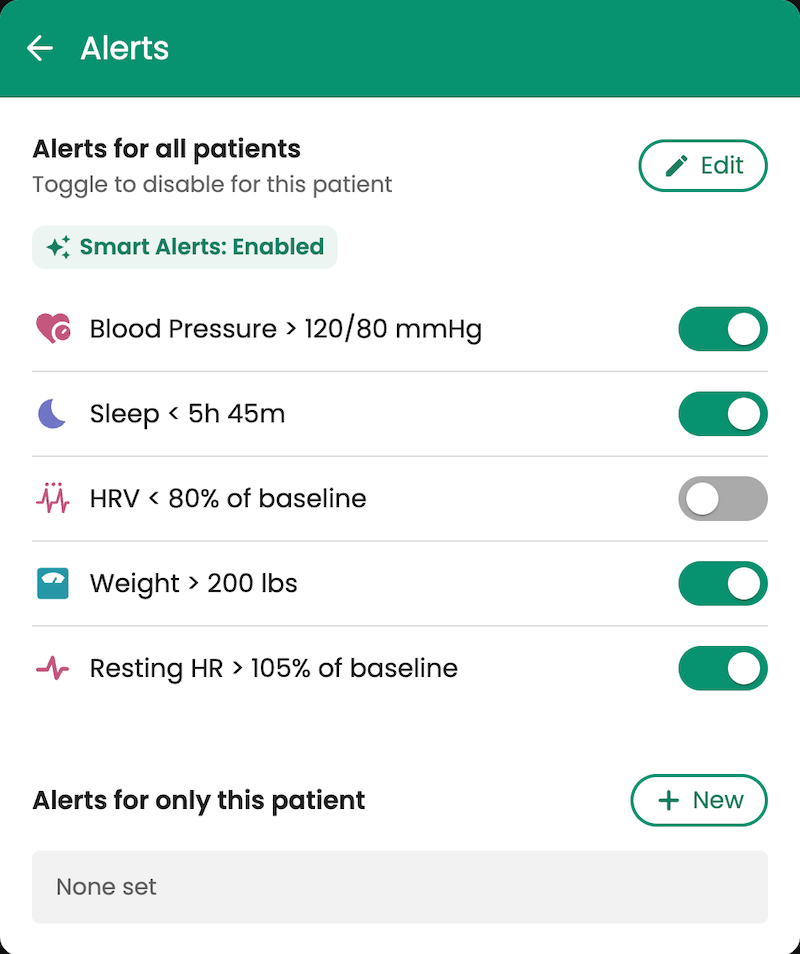
The AI assistant
Guava's AI assistant lets you ask specific questions about your patients' health data to make fragmented data manageable and actionable. It securely analyzes patient information stored in Guava and uses advanced reasoning to answer clinical questions in natural language.
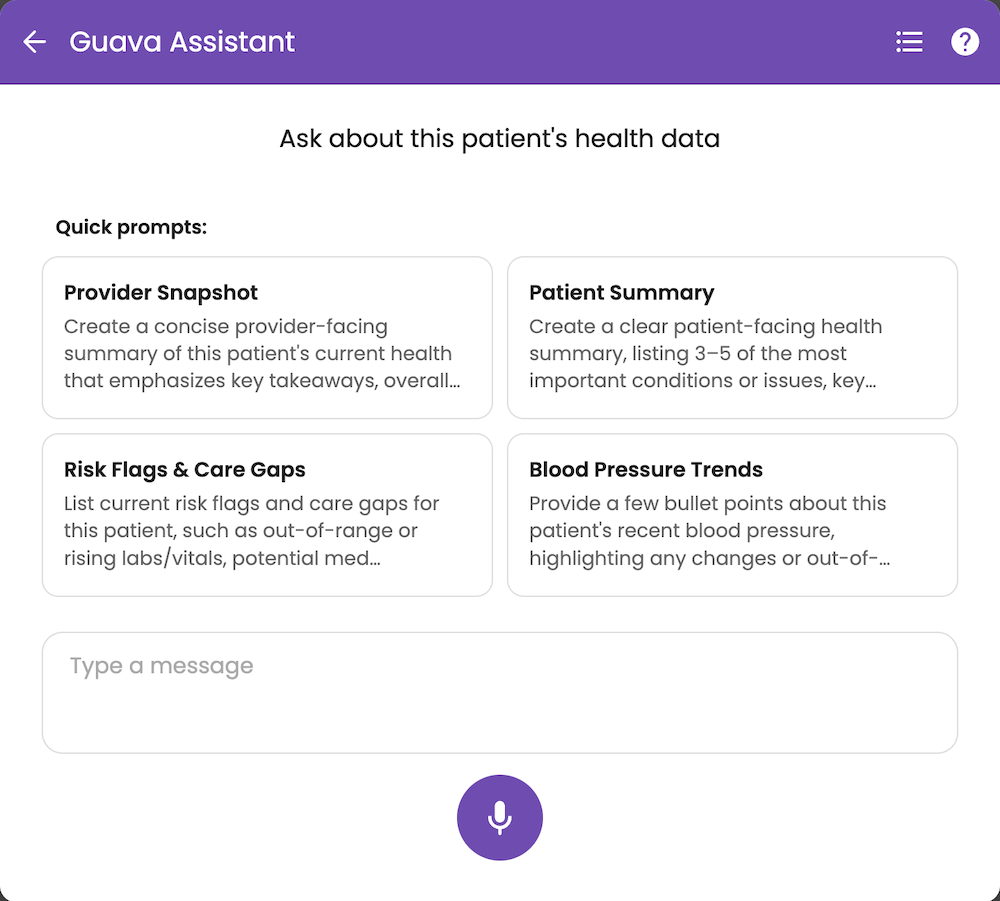
Here are a few ways the AI assistant can help with longitudinal health data analysis:
- Summarize changes since the last visit, allowing you to focus on what's new
- Highlight anomalies and outliers in health data to prioritize potential risks
- Assess treatment effectiveness over the last month, or the last year
- Track patient improvement or deterioration based on ongoing trends
Patients can also use the Guava Assistant, available in the Guava app, to ask questions, better understand their health data, or log daily information via voice or text.
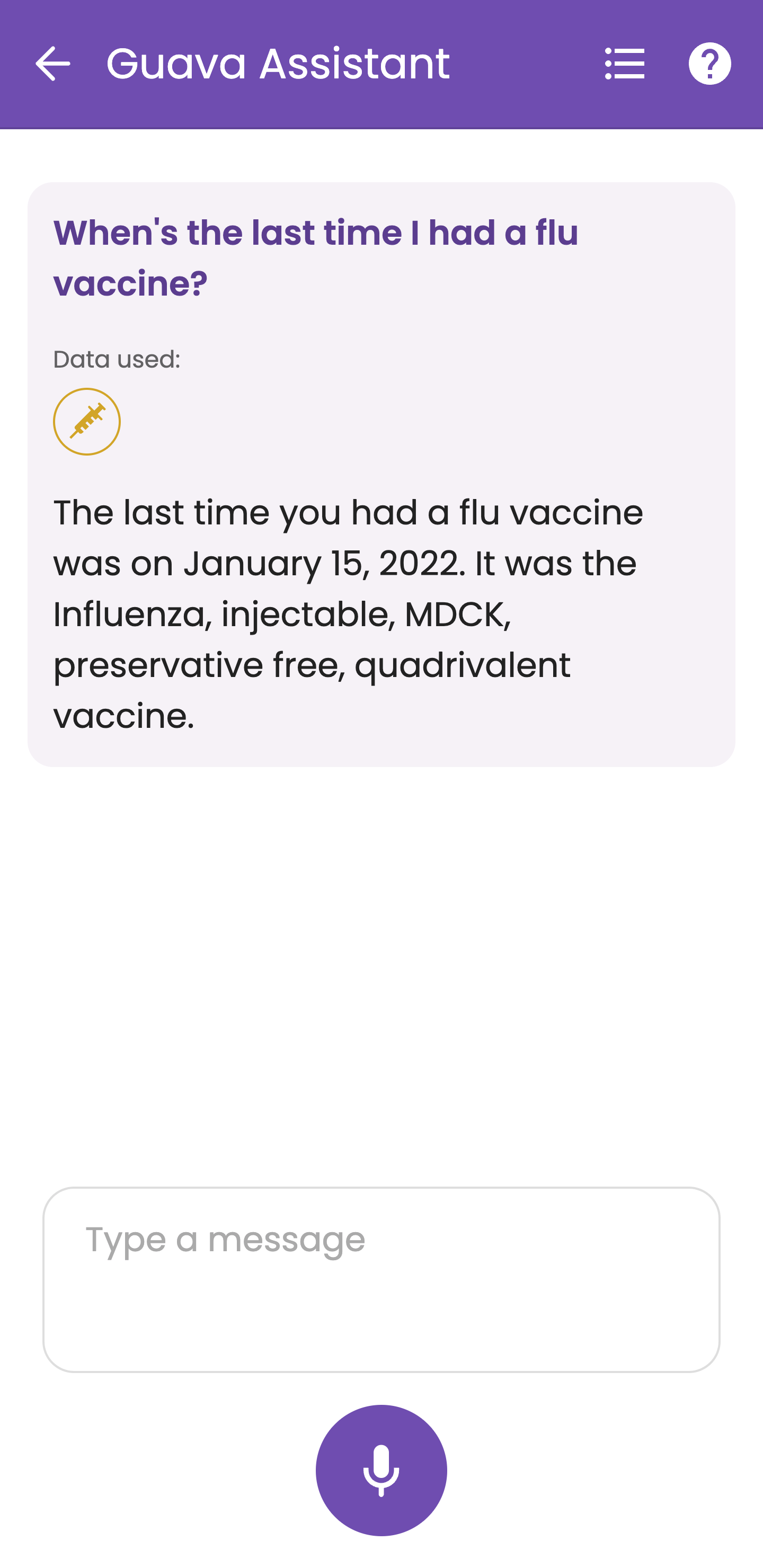
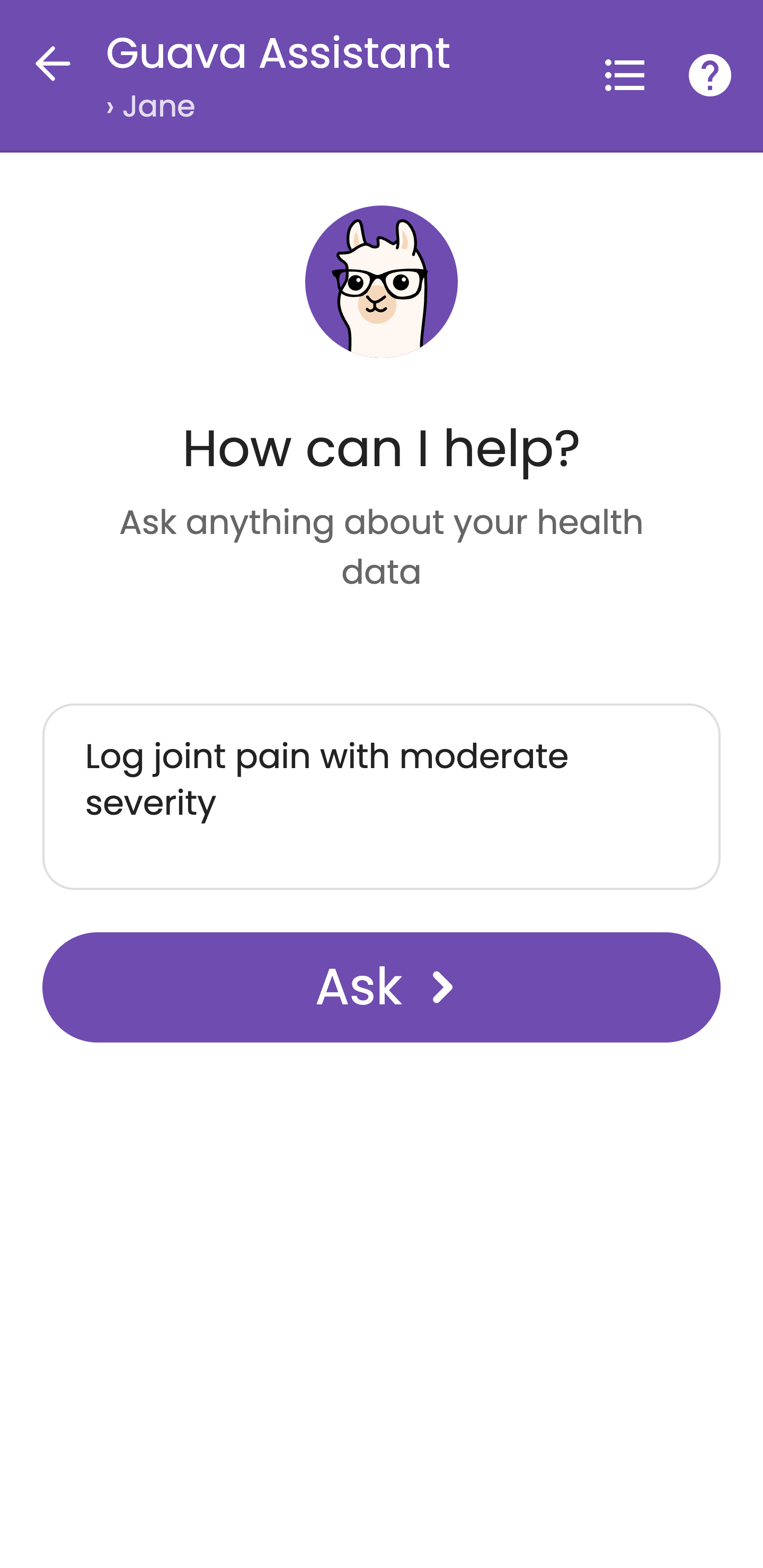
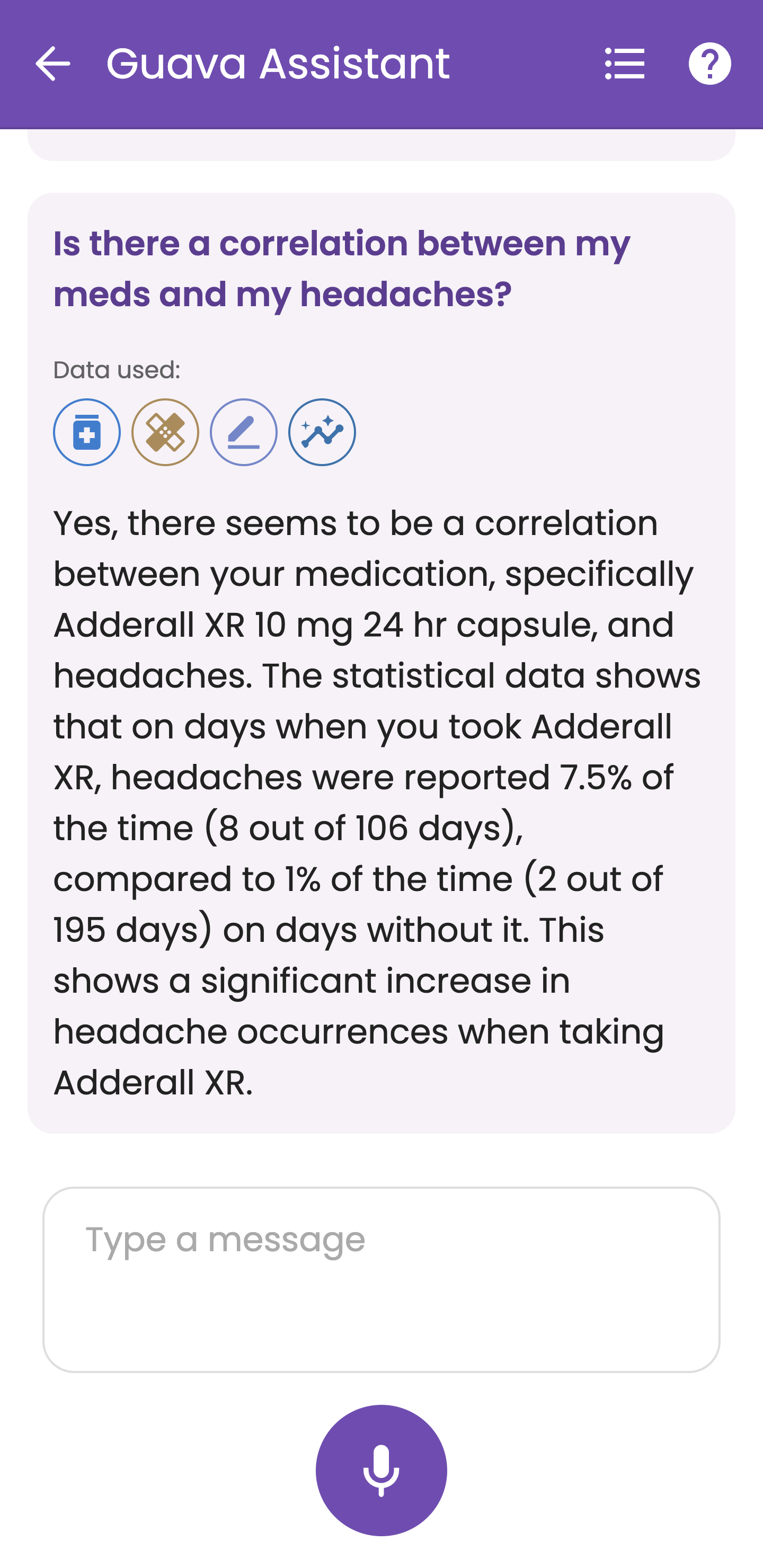
For nutrition tracking, patients can even take photos of meals to get AI-generated nutrition estimates.
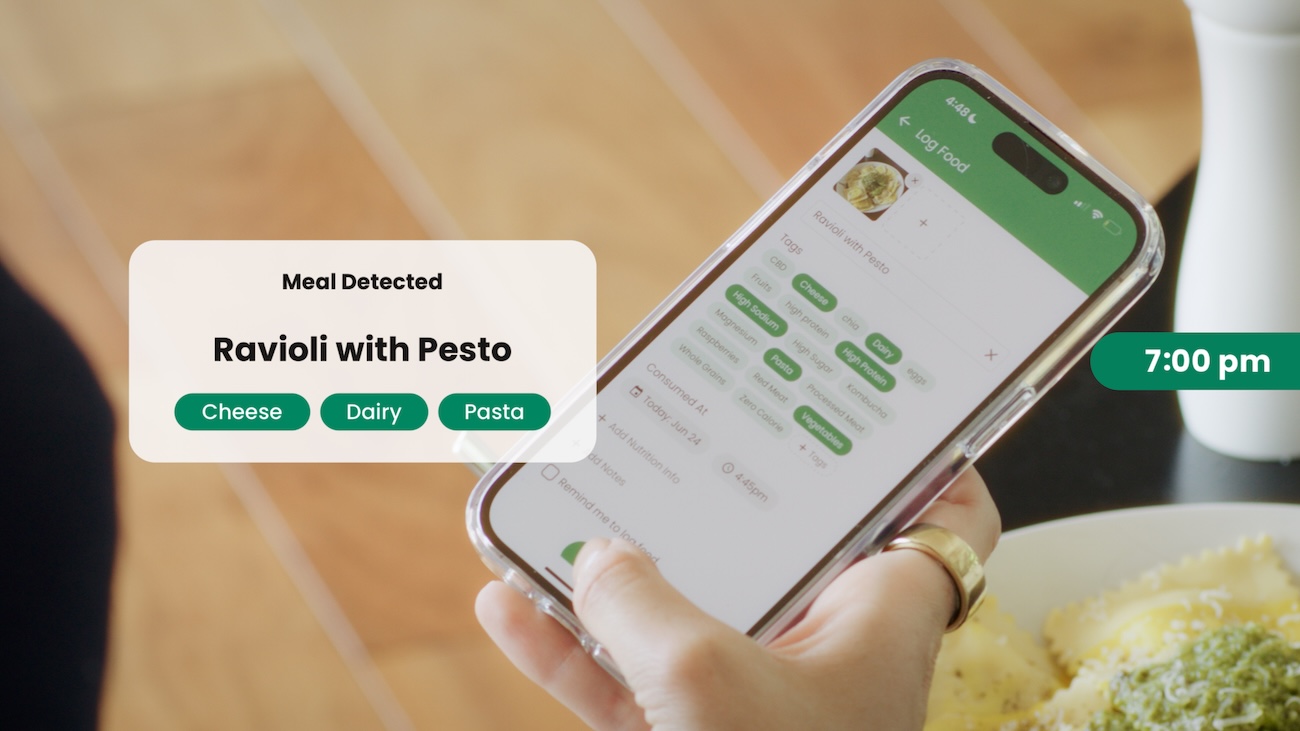
How this improves clinical workflow for doctors
For physicians and other providers using the Provider Dashboard, they’ve been able to improve the efficiency of their workflow, while simultaneously improving patient relationships. The AI tools enable providers to spend less time bouncing between platforms in preparation for appointments, while the Guava app gives their patients a high-quality experience which was thoughtfully designed for them first.
Dr. Radley Griffin, founder of Griffin Concierge Medical, explained that,
“Guava lets us present data to patients in a way they can absorb. That’s meaningful — and it provides real value for them.”
He also explained how the Guava Provider Dashboard improved his concierge workflow as a whole:
“Guava facilitates connection and collaboration for relationship-focused physicians and patients. They provide opportunities for insights and touch points between visits, and as a relationship-based practice, we embrace every chance to connect with our patients.” - Dr. Radley Griffin, Board-Certified Family Medicine Physician
Naomi Bauer is a Doctor of Physical Therapy specializing in POTS and Long COVID rehab, and Taylor Goldberg is a Doctor of Chiropractic. For each of them, the tools provided by Guava lead to better chronic care management for their patients:
“The Guava Provider Dashboard has been a really great platform. I can see at a glance how specific metrics are trending on daily, weekly and monthly timeframes so I can have a better understanding of my clients’ status and progress.” - Naomi Bauer, PT, DPT, POTS and Long COVID Rehab Specialist
“Guava has made flare tracking faster, more personalized, and easier for both EDS/HSD patients and providers–transforming how we manage care.” - Taylor Goldberg, DC
How it works
Guava brings together patient-reported data from various sources to create a unified health timeline. AI analyzes the data to detect meaningful trends, abnormalities, and risks, helping physicians provide proactive, personalized care.
1. Patient data integration
With the Guava app, patients have everything they need to store their health in one place. In Guava, they can easily:
- Link to EHRs and upload medical records, including labs, imaging, and visit summaries, for seamless, continuous data collection.
- Connect wearable devices to monitor heart rate, sleep, blood pressure, and activity.
- Track their health by logging symptoms, nutrition, medications, mood, and more.
Patients can use the AI assistant to log entries using their voice or via text. They can also use AI photo logging to track nutrition data.
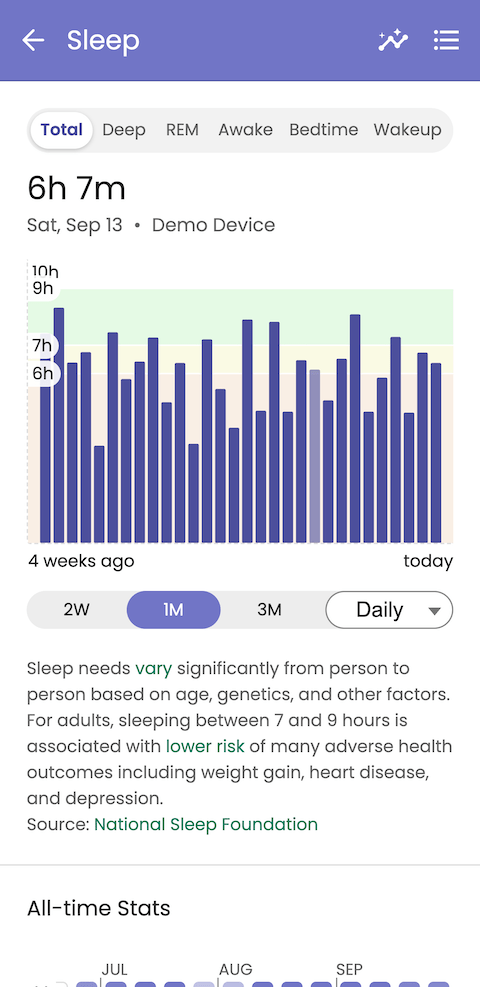
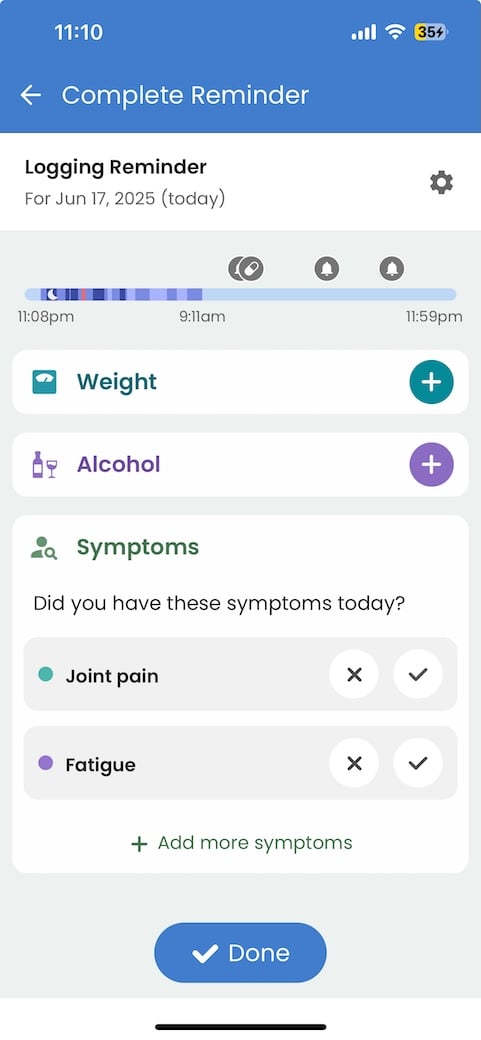

2. Longitudinal patient data
The Provider Dashboard organizes this data so physicians can quickly see progress over weeks, months, or years. In Key Metrics, you can visualize and compare vitals and wearable data; in Biomarkers, you can track lab values over time. Providers can also access AI-parsed records, including lab tests, from document uploads, images, and EHR integrations in an organized searchable format.
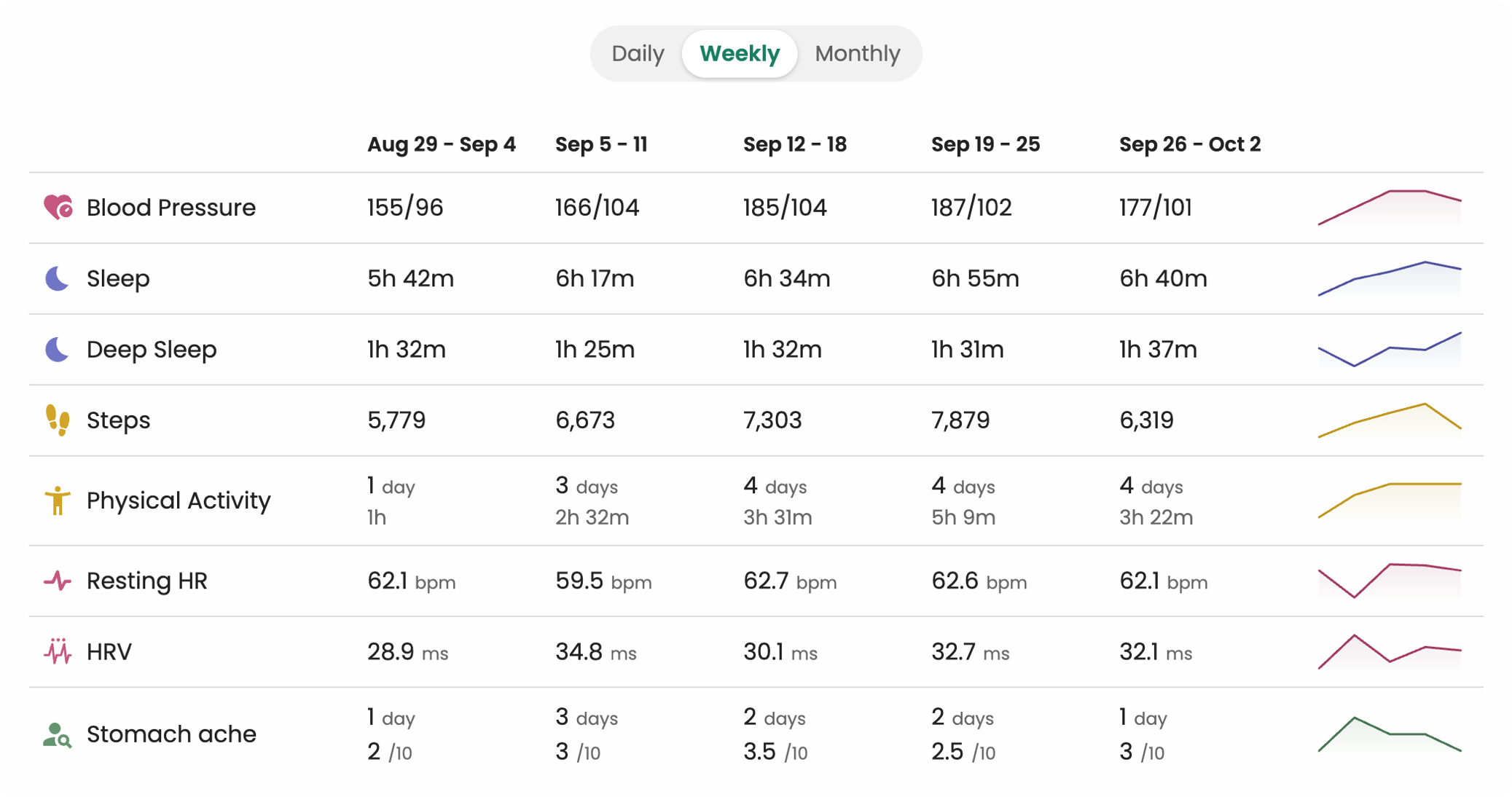
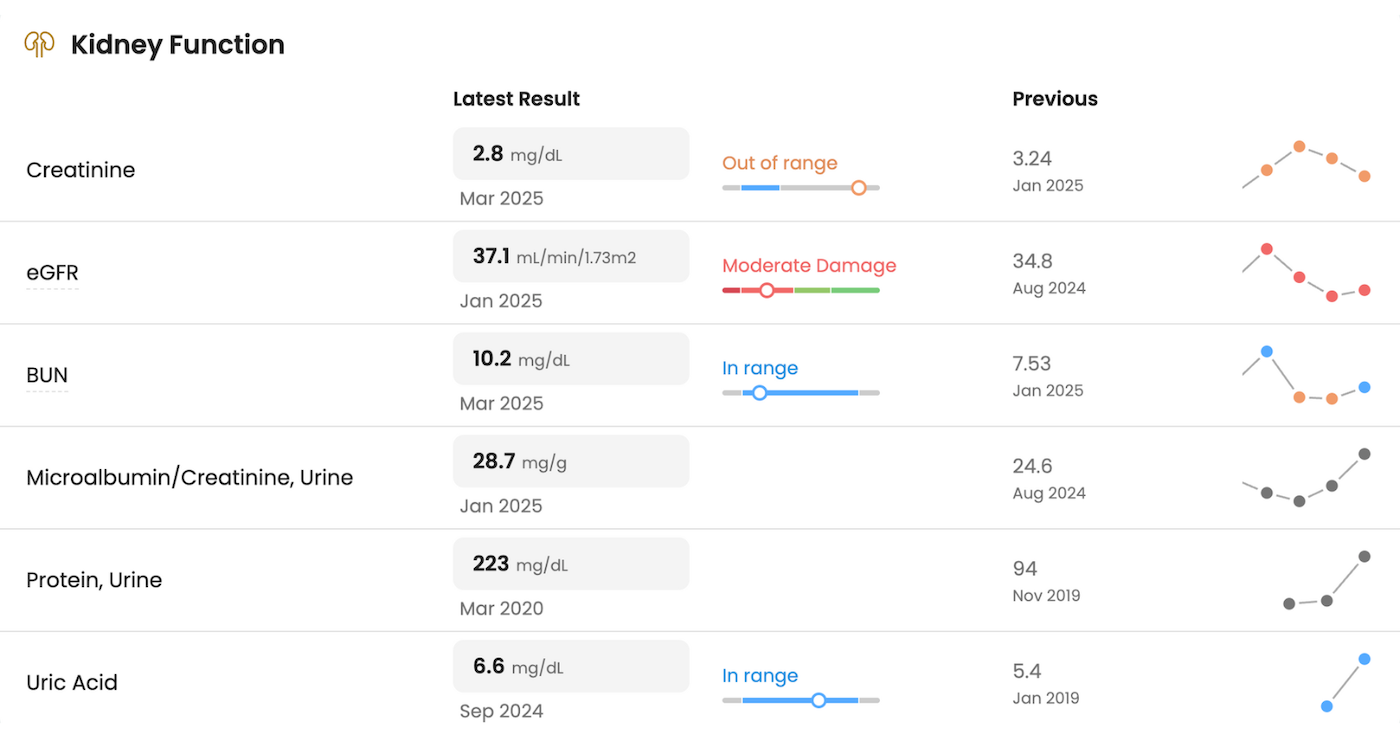
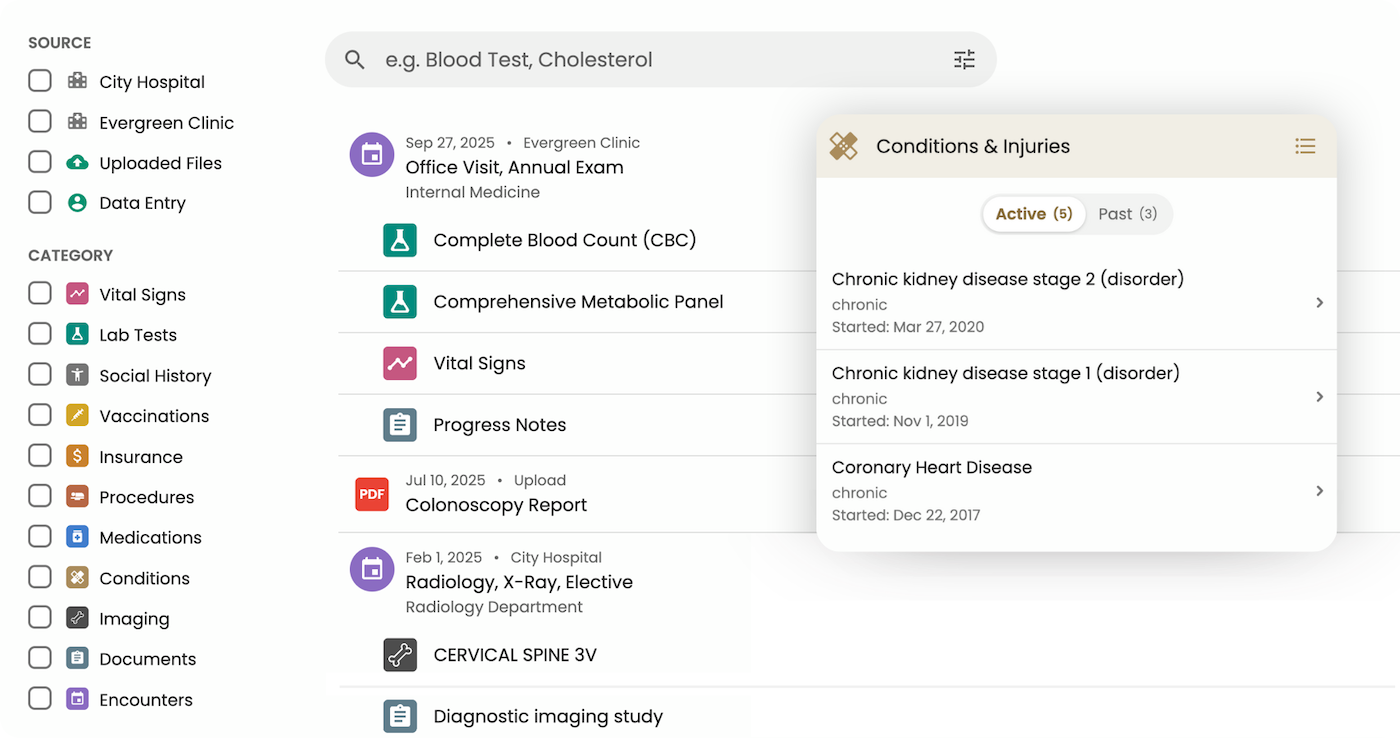
3. AI-powered trend detection & insights
Guava’s AI-enabled tools draw from each patient’s complete, aggregated health data within the platform. This allows automatic detection and surfacing of meaningful trends, subtle shifts, and abnormalities across sources like labs, wearables, and daily logs.
Through the Insights feature, providers and patients can explore data-driven relationships between key health factors. Guava uses an algorithm to analyze longitudinal health data, identifying statistically significant correlations that reveal emerging patterns over time. This helps doctors understand and proactively address clinical issues before they escalate, without the need to manually dig through complex data.
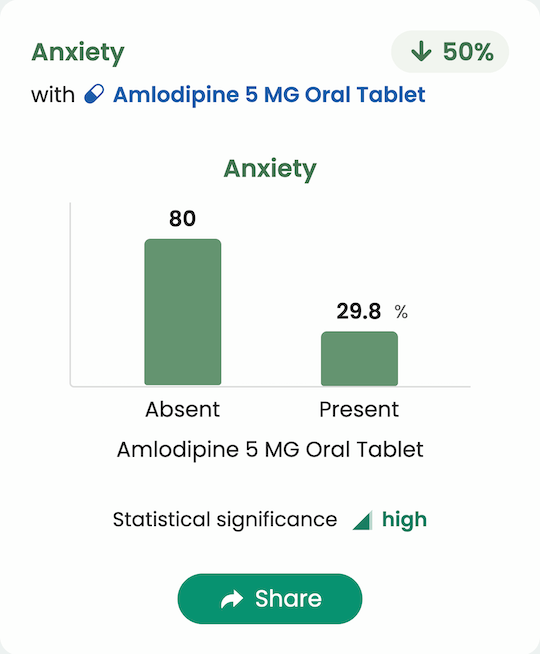
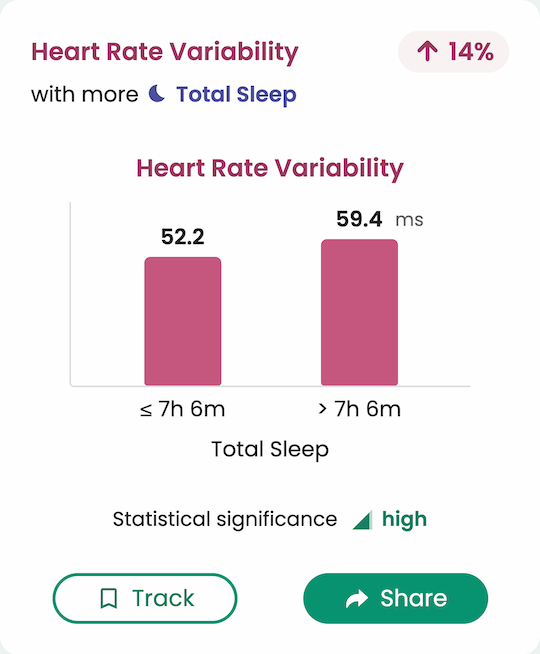
Interactive charts and AI-generated highlights make it easy to visualize longitudinal health trends.
Compliance and integration
EHR Integration
Guava allows patients to securely sync their health information from most major patient portals within the US, like MyChart, Elation, Cerner, and more, using their portal login info. For providers outside the US or providers whose patients have some non-US EHR data, Guava automatically extracts records from PDFs and images in any language and supports CCDA XML imports.
See the full list of 60,000+ supported apps & health systems.
HIPAA compliance
Guava is fully HIPAA-compliant and takes the privacy and security of health data very seriously. All data stored in Guava is secured and encrypted using industry-standard encryption. Data is also safeguarded from unauthorized access and tampering and uses modern cloud technologies built specifically for HIPAA compliance.
Read more about privacy and security.
Compatibility
Both the Provider Dashboard and the Guava app work on desktop, tablet, iOS, and Android, making it easily accessible for you and your patients.






